|
|
|
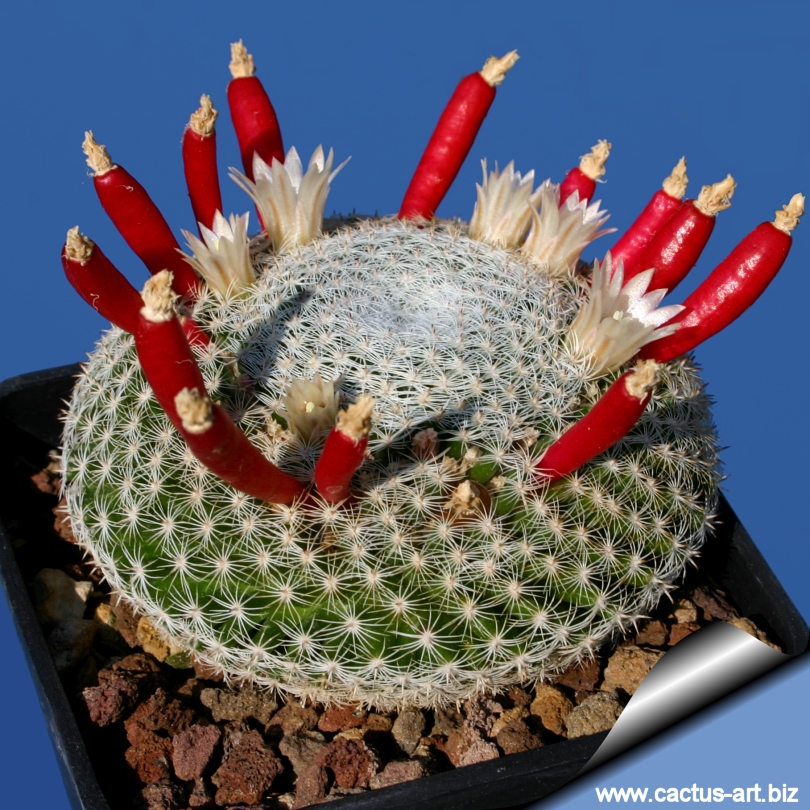
Mammillaria microthele ( v. superfina ) SB34 Presa de Guadalupe, San
Luis Potosi, Mexico
This is a relatively tough and user-friendly small cactus with
tight, dense minute
white spines that lie flat against the plant so not that dangerous.
|
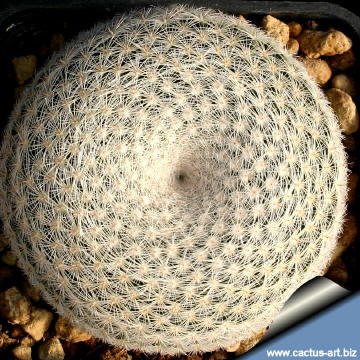 |
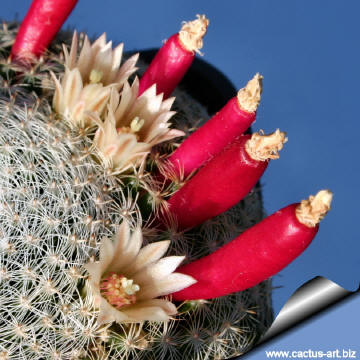 |
|
|
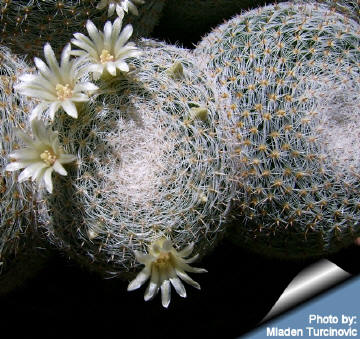
Photo and ©
copyright by
Mladen Turcinovic (Croatia) |
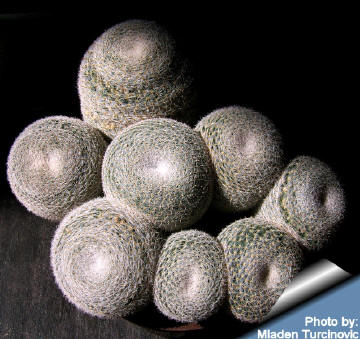
Photo and ©
copyright by
Mladen Turcinovic (Croatia) |
|
|
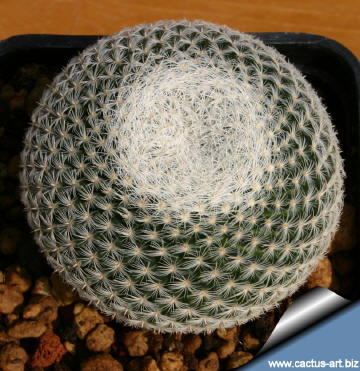 |
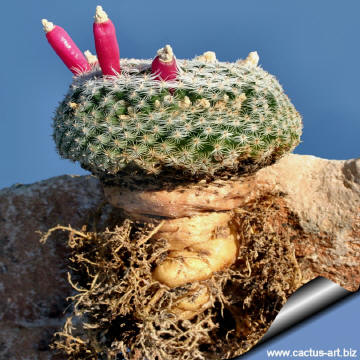 |
|
Cultivation: It is a slow
growing species .
Use pot with good drainage and a very porous
mineral-based potting mix, keep dry in
winter. Pot plants are quite
wet-sensitively. Care must be taken with watering (Rot prone)
and needs good
drainage. Water sparingly during
the
growing season, keep very dry in
winter. Feed
with a high potassium fertilizer in summer.
Usually it is recommended to
overwinter this plant in a bright and warm greenhouse with at least
8-10° C , but it proved to be quite
frost resistant
(if kept dry it hardy as low as -10° C)Outside
full sun or afternoon shade, inside needs bright light, and some direct
sun.
Propagation: Direct sow after
last frost,
cuttings (if available).
|
|


Advertising
|
|
|
|
|
Family:
Cactaceae (Cactus
Family)
Scientific name: Mammillaria
formosa ssp. microthele (Muehlenpfordt) D.R. Hunt
First description:
Mammillaria microthele Muehlenpfordt
Published in: Allg. Gartenz. 16:11 (1848)
Origin: Origin: Mexico (Coahuila, San Luis Potosi,
Tamaulipas).
Habitat: usually found in limestone slopes
of Agave lecheguilla-Hechtia glomerata scrub. Altitude 1.000 - 2.200 m.
Conservation status: Listed in
CITES appendix 2.
Synonyms:
- Mammillaria formosa Galeotti ex
Scheidweiler
1838
- Mammillaria pseudocrucigera
- Mammillaria arroyensis
Etymology: Microthele from
Greek “micros”=small and Geek “thele”= tubercle, for the
very small tubercles of the plant.
This is one of the Mammillaria commonly
called "Owl Eye Cactus", known for
dichotomous branching (forking or dividing into two parts). Although
dichotomous branching is not a common occurrence in cacti in general, it
happens for some reason in this particular subspecies. What
is interesting about this cactus is that it began as a single head, and
it has now divided twice, forming what will be four separate branches.
When the division process started, it was obvious that four heads would
appear, but I don’t think the one head divided quadruply. Most probably,
one head became two, and then those two immediately divided.
Other Owl Eye Cactus among others comprise:
M. karwnskiana,
M. formosa,
M. tlalocii and
M. perbella.
|
|
|
|
Description: Slow-growing
flattened plants, clumping with tight, short white spines, form low
mounds in time
Stems: Almost discoidal to globose, apically depressed, dividing dichotomously, each stem are up to 6 cm
in diameter.
Radial spine: 22 - 24 tiny, white and bristle-like that almost
obscure the stem.
Flower: Rings of small (5 mm) nearly pure white (Or with light
pink midstipe ) are produced in spring over a several weeks period
The so called M. microthele “superfina” is a particular
nice selected form with very small tubercles and spines.
NOTE: M. microthele
is part of the very variable M. formosa complex, the
different growing forms of which have for a long time been considered
separate and distinguished subspecies, for example:
subsp. formosa: It has 20-22 radial spines and pink
flowers. Origin: oahuila, Aguascalientes, Guanajuato, Zacatecas,
Tamaulipas, Nuevo Leon and San Luis Potosi.
subsp. microthele: It has 22-24 bristly, flattened spines
with white flowers. Origin: Cohahuila, Guanajuato, Tamaulipas and San
Luis Potosi. This form should be grown conservatively to preserve the
flat habit that is present in the wild.
subsp. pseudocrucigera: It has about 18
radial spines, (sometime lacking in mature areoles) the blooms are pink
with paler margins. Origin: Queretaro, Guanajuato.
|
|
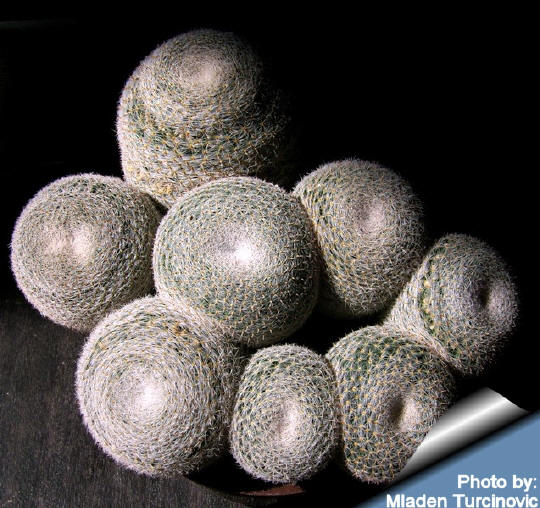
Photo and ©
copyright by
Mladen Turcinovic (Croatia)
Old plants with lots of branching are
treasures.
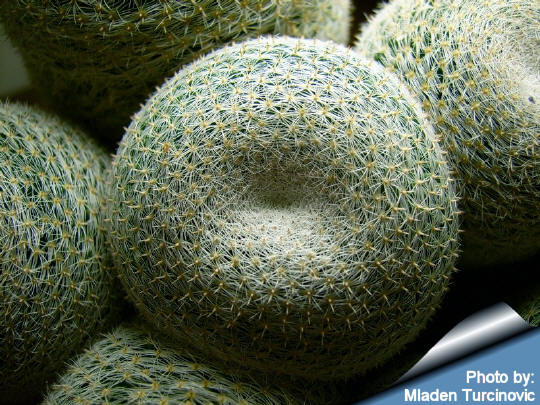
Photo and ©
copyright by
Mladen Turcinovic (Croatia)
Photo of conspecific taxa, varieties, forms and
cultivars of plants
belonging to the
Mammillaria formosa
complex
(This
Taxon
has lots of synonyms (
like many other cacti) whit
several controversial varieties and subspecies and comprises a
multitude of different forms, but where each form is linked to others by
populations of plants with intermediate characteristics):
|
|